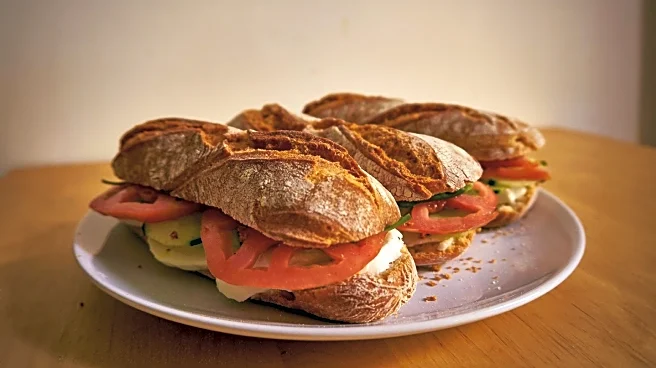Rapid Read • 9 min read
The Princess Cake, originally known as 'green cakes' due to its marzipan shell, was invented by Swedish home economics teacher Jenny Åkerström in the early 20th century. The cake gained its regal name after becoming a favorite of Prince Carl's daughters, who were Åkerström's students. Traditionally, the cake is dome-shaped, featuring layers of fluffy cake, pastry cream, raspberry jam, and whipped cream. Today, the Princess Cake has transcended its Scandinavian roots, gaining popularity in the United States. Bakers like Paris Starn in Jersey City and Bobby Schaffer in Chicago are putting their own twists on the classic dessert, incorporating unique ingredients such as pistachio marzipan and roasted almond praline. In Los Angeles, Hannah Ziskin offers variations with olive oil chiffon cake and mascarpone whipped cream, while Christine Yang in Berkeley experiments with elderflower crème diplomate and plum-and-black pepper jam.
AD
The adaptation and popularity of the Princess Cake in the U.S. reflect broader trends in the culinary world, where traditional recipes are being reinvented to cater to diverse tastes and preferences. This phenomenon highlights the growing appreciation for international desserts and the creativity of American pastry chefs. The cake's expansion beyond its original cultural context signifies a blending of culinary traditions, which can lead to increased cultural exchange and understanding. Additionally, the popularity of such desserts can stimulate local economies by attracting customers to bakeries and cafes, thereby supporting small businesses and encouraging innovation in the food industry.
As the Princess Cake continues to gain popularity, more bakers across the U.S. may begin to experiment with their own versions, potentially leading to new flavor combinations and presentations. This could further enhance the cake's appeal and solidify its place in American dessert culture. The trend may also inspire other traditional European desserts to be reimagined and introduced to the U.S. market, fostering a dynamic and evolving culinary landscape. Additionally, the success of the Princess Cake could encourage collaborations between American and Scandinavian bakers, promoting cross-cultural culinary partnerships.
The rise of the Princess Cake in the U.S. also raises questions about authenticity and cultural appropriation in the culinary world. As chefs adapt traditional recipes, there is a delicate balance between innovation and preserving the original cultural significance of the dish. This development invites discussions on the ethical considerations of modifying cultural foods and the importance of respecting culinary heritage while embracing creativity. Furthermore, the cake's popularity may influence consumer expectations, leading to a demand for more artisanal and unique dessert offerings, which could impact the broader food industry.
AD
More Stories You Might Enjoy












